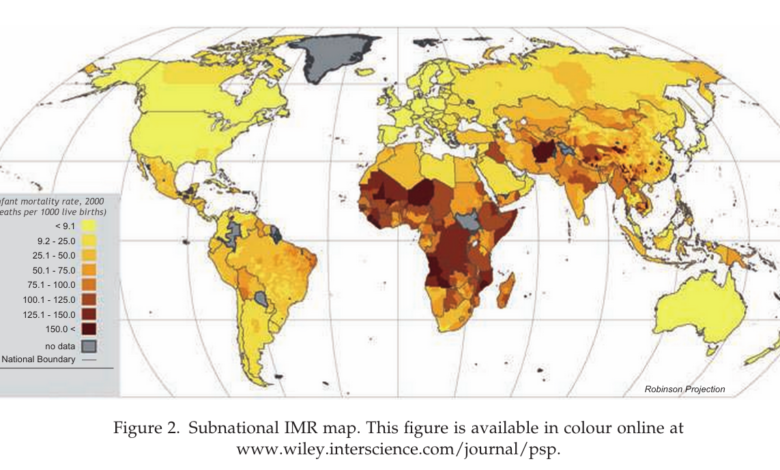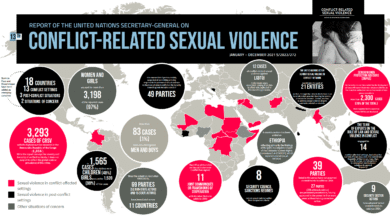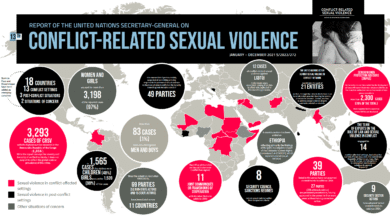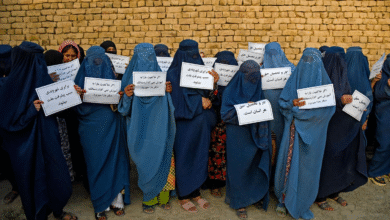Child Mortality: Urgent Call for Action to Save Lives

Child mortality remains a pressing global issue, casting a shadow over decades of progress made in enhancing child health. Despite a record low of 4.8 million children dying before their fifth birthday in 2023, this achievement is at risk due to systemic underfunding of essential health initiatives. Organizations such as UNICEF emphasize the importance of robust child survival programs to combat preventable child deaths, particularly in low-income regions where healthcare access is limited. The decline in stillbirth rates, now at approximately 1.9 million, underscores the need for ongoing support for global health interventions that ensure equitable access to vital services such as vaccinations and maternal care. As we strive to uphold the gains made, urgent action is necessary to avert the potential reversal of hard-earned successes in child health and survival.
The phenomenon of child mortality, often referred to as child death rates, reflects the tragic loss of life among young children and infants, highlighting the critical gaps in healthcare access and quality. It encompasses various preventable child deaths caused by factors like inadequate maternal care and the spread of infectious diseases. The United Nations and various child health organizations like UNICEF have been at the forefront of promoting initiatives aimed at reducing stillbirth and infant mortality rates worldwide. Positive strides have been made through global health interventions, yet disparities remain, especially in developing nations where children face significant risks. Addressing these challenges requires a comprehensive approach, embracing child health as a shared responsibility across national and global platforms.
The Ongoing Battle Against Preventable Child Deaths
Despite significant progress in reducing child mortality rates, the threat of preventable child deaths looms large. In 2023, an astonishing 4.8 million children under the age of five lost their lives, highlighting the urgent need for continued investment in global health interventions. These preventable fatalities often stem from a lack of critical resources and support, particularly in low-income countries where access to essential services remains limited. Vaccines, nutritional support, and basic sanitation are proven strategies that have saved countless lives, yet the recent funding cuts jeopardize these essential services.
UNICEF emphasizes that policy choices play a crucial role in sustaining the gains made in child health. Without a renewed commitment to funding and supporting child survival programs, the progress achieved over the past decades could be reversed. Initiatives that address preventable child deaths must be prioritized to ensure that children in vulnerable populations receive the care they need. Each preventable death is a stark reminder of the disparities in healthcare access, which must be addressed to safeguard the future of millions of children.
Understanding Stillbirth Rates and Their Implications
The decline in stillbirth rates is a central focus in the fight for child health, yet challenges remain significant. In 2023, approximately 1.9 million stillbirths were recorded, with many occurring during labor due to complications that could be preventable. Risk factors such as maternal health, timely medical interventions, and access to comprehensive healthcare are critical in reducing these grim statistics. The disparities in stillbirth rates between low-income and high-income countries starkly illustrate the urgent need for improved maternal healthcare systems and better access to skilled birth attendants.
Reducing stillbirth rates is not only a healthcare challenge but also a public health priority that influences child mortality. Poor maternal conditions, including malnutrition and a lack of prenatal care, often lead to adverse outcomes for both mothers and their babies. Improving healthcare access and quality can significantly affect maternal and newborn health, paving the way for healthier, thriving children. The alarmingly high rates of stillbirths in resource-poor settings necessitate immediate action to implement effective maternal health programs.
Frequently Asked Questions
What are the main causes of preventable child deaths?
Preventable child deaths are primarily caused by conditions such as premature birth, complications during labor, and infectious diseases like pneumonia, malaria, and diarrhea. According to recent UNICEF reports, almost half of under-five deaths occur within the first month of life, highlighting the urgent need for improved maternal, newborn, and child health care to combat these preventable causes.
How do regional disparities affect child mortality rates?
Regional disparities significantly impact child mortality rates, with children in low-income countries facing an 80 times higher risk of death before age five compared to those in wealthier nations. Factors include limited access to essential services, vaccines, and treatments, particularly in rural areas and among poorer populations, emphasizing the importance of targeted global health interventions to bridge these gaps.
What role does UNICEF play in addressing child health and mortality?
UNICEF is pivotal in reducing child mortality through its child survival programs, which focus on proven interventions such as vaccination, nutrition, and clean water access. The organization’s efforts aim to combat preventable child deaths and stillbirths, ensuring that essential health services reach vulnerable populations, particularly in regions most affected by high child mortality.
How have funding cuts impacted child survival programs?
Funding cuts have severely affected child survival programs, leading to shortages of healthcare workers, disruptions in vaccination campaigns, and a lack of essential medical supplies. This results in increased preventable child deaths, especially in areas already struggling with high mortality rates, underscoring the need for sustained investment in global health initiatives.
What can be done to reduce stillbirth rates effectively?
Reducing stillbirth rates requires improving access to quality maternal healthcare, timely medical interventions during labor, and addressing underlying health issues such as maternal infections. Global health interventions focusing on education, healthcare access, and support for vulnerable populations are critical to preventing stillbirths and ensuring healthy deliveries.
| Key Point | Details |
|---|---|
| Record Low Child Deaths | In 2023, 4.8 million children under five died, marking a significant decline. |
| Threats to Achievements | Funding cuts and health system challenges are jeopardizing progress. |
| Preventable Causes | Almost half of under-five deaths occur in the first month of life, primarily from premature birth and complications. |
| Regional Disparities | Children in low-income countries face significantly higher risks of death. |
| Funding Cuts Impacting Services | Reductions in funding are leading to healthcare worker shortages and clinic closures. |
| Call to Action | Collaboration is essential to protect children’s health and prevent further deaths. |
Summary
Child mortality remains a pressing issue as significant gains in reducing child deaths are now at risk. Despite reaching a record low of 4.8 million deaths in 2023, a lack of investment and funding cuts threaten to reverse these achievements. With the high prevalence of preventable causes of death and regional disparities exacerbating the situation, immediate action is needed to ensure the health and survival of children worldwide. Continued global commitment to interventions such as vaccination and maternal care is crucial to combating the preventable tragedies that claim the lives of millions of children.




